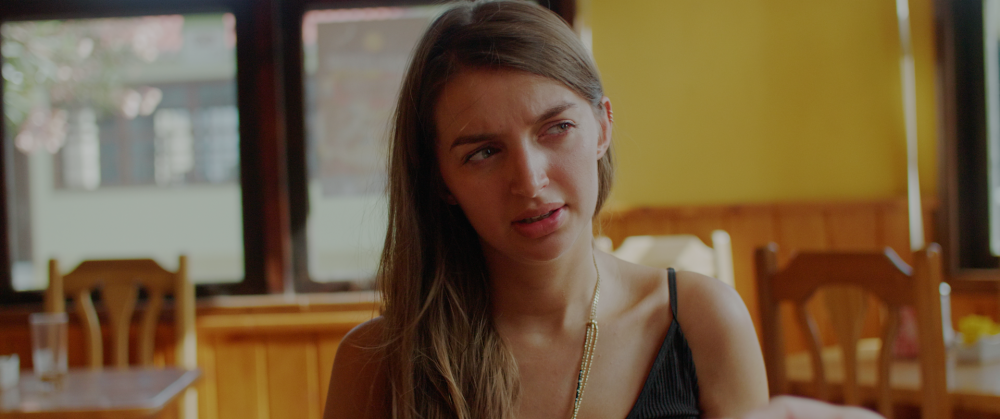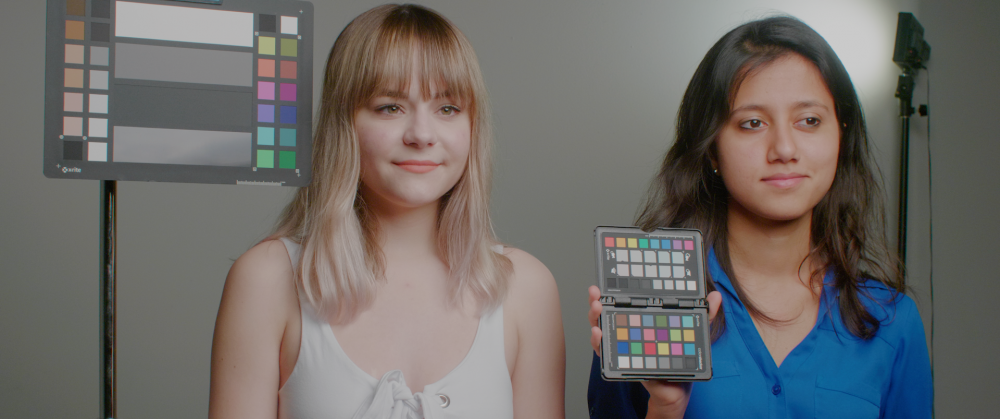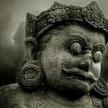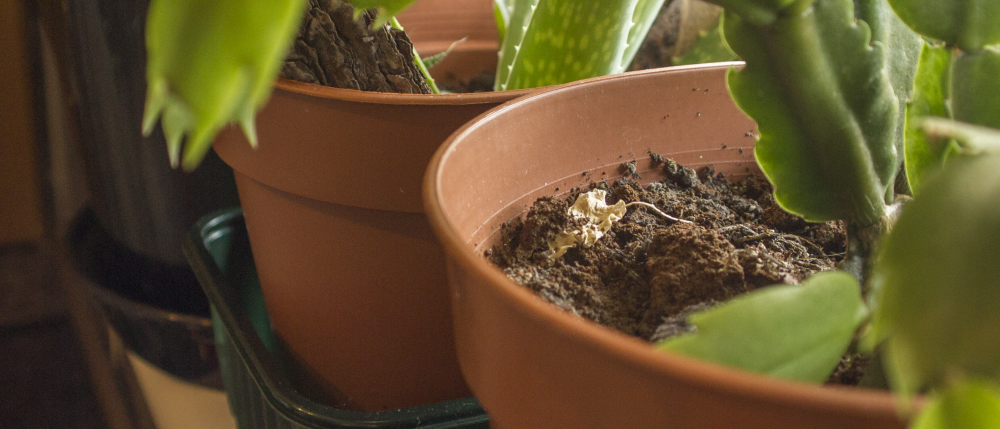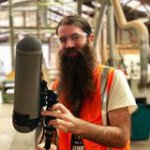Leaderboard
Popular Content
Showing content with the highest reputation on 05/07/2018 in Posts
-
"I am pleased to announce GHa V2, the reference grade update. For the last six months (since original release), I have been building a new version of the conversion from the ground up, to achieve a new standard of precision and smoothness (silk gradients). The changes in V2: - 25x the Number of Color Samples (25k Per Camera) - Custom Coded C++ Color Engine (Smooth Interpolation) - Alexa On Hand (For Repeated Iteration) - Corrected Lens Distortion of Original Conversion - Smarter Handling of of Exposure Placement to Maximize DR (both Emotive Color and LogC) - Cine-D Support (and Improved [PRE]s) - Premiere Pro Specific [PRE]s (for VLog & Others) - Improved Documentation" Here is the new PDF Emotion II (Updated to V2) (Edge/Explorer or Safari recommended for most accurate color; Chrome/Opera Ok; Avoid Firefox)3 points
-
After owning this camera since launch, I still have to admit it remains my favorite hybrids. Footage is useable straight out of the camera. Canon color remain a notch above the rest. And even with a baked in picture profiles, the codec allows the footage to be pushable when CGing in post. Still a great camera and top pick in mid 2018!2 points
-
After doing a little bit of research, I discovered that while there is a site comparing most Amatuer and Prosumer Cameras (https://camerasize.com/compare/), there appear to be none that compare Camera Lens sizes (except one that matches M43 cameras with lenses for relative look and size estimations http://four-thirds.org/en/special/matching.html). There is a strange presumption that lenses must remain small at the cost of faster glass or great options, and this applies to Panasonic too. Olympus has been shamelessly making some superb glass and some of it is pretty small too, especially for the quality and brightness that it offers. If Samsung could make f2-2.8 (16-50mm) Zooms, there is no reason Panasonic should not aim for Zooms that start brighter than f2.8 (Panny Leica f2.8-4 12-60mm). I saw the Zuiko f2 Zooms and they are absolutely enormous. Panasonic should aim for a combination of bright and decent range, even if it means a little large lens (not as enormous as the Zuiko f2 zooms). I don't like variable zooms, cause they suddenly feel weird if you don't close the aperture to begin with, and then zoom in. A 12-100 versions of the stellar Olympus f4 zoom, but with an f2.8 lens would be perfect. It could be large. This single lens could outsell everything but the M43 system if it has good OIS and isn't priced above $1499.2 points
-
Hey dxotic, you should have an email from me Exposure placement for Day V2 is quite different; this is how I described it to David L'Abbée: "Before, clean range was being rolled off into the noise floor with Daylight; this wasn't very smart. Now, range is allotted to the highlights, which allows more meaningful DR when exposed for V2. For V1 footage, you can place the luma per page 8, and slightly increase saturation to compensate" Hehe, because I'm crazy! I got it to make this conversion perfect, because that was a much better proposition than trying to measure it on borrowed time (which is basically what limited the fidelity of V1). I did upwards of twenty measurement redo's for V2, all told. tweaking the approach along the way. This was critical, as the first V2 run through was really far off of what was needed for the code to ingest Also, it is the most unwieldy thing. Its got minimal kit needed to run (no battery, Frankenstein hdmi monitor, etc.); its a heavy computer with wires, in 2k. The GH5 with IBIS allows me to shoot in my particular style, which is all about motion Also, per my promise to you a few months ago, here are the raw side-by-sides: Daylight Alexa & GH5 Raw Footage Tungsten Alexa & GH5 Raw Footage (Use DaVinci Resolve for these - accurate Arri ProRes)2 points
-
Here is my first test filming 2520x1080, 12 bit lossless on the EOS M with the sd card hack, this shot is 2 minutes long using the stock zoom lens and a sandisk extreme pro card. Processed via MLV App and Resolve: Currently you need to perform an overclocking test and then a benchmark test for your SD card after each time the camera is turned off, so it's a bit cumbersome. Here's a still - a cdng processed through photoshop, different colour temperature than in the video:2 points
-
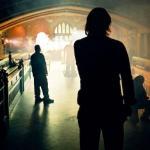
Blackmagic Pocket Cinema Camera 4K
Danyyyel and one other reacted to John Brawley for a topic
I thought they’d already discontinued the pocket ? Watch that become a cult camera if it isn’t already. I think they’ll keep the micro going for some time. It’s really a different camera. In the photo above the camera has a wooden camera cage, a Noga arm and a BMD 5” VA as the operating monitor. On front is the SLR Magic 10mm T2.1. I’m manually focussing myself, using peaking on the VA. By way of example almost all of this promo is either Ursa Mini Pro or Micro using that exact rig. This whole scene is shot Ursa Mini Pro I have used a LOT of Ursa Mini Pro and Micro in the resident. Not just as an insert camera, but shooting whole scenes using only the Ursa Mini Pro. Most scenes have a mix of Ursa Mini Pro and ALexa, and I’d estimate more than 40% of the show is Ursa Mini. I tend to use the micro camera for these kinds of surgery shots where I can very easily reach into the scene and get super close before diving down to almost inside the surgical field, and then transitioning back to another actor. It keeps it very agile and alive shooting this way. I’d anticipate the Pocket 2 will replace this rig for these kinds of shots. JB2 points -
Audio Recorders?
Mark Romero 2 reacted to mercer for a topic
So, I’m at the point where I am about to start shooting dialogue scenes for my film. Being a one man band, guerrilla shooter, I need my set up to be as quick and easy and inconspicuous as possible. I’ve used the H1 and the DR-05 but they’re both a little big for my set up. Right now, I have two Olympus LS-7 field recorders and I love the quality and how small they are. I can have one attached to the top of my camera with a small shotgun and then have another in my actor’s pocket with a lav. They will do fine if need be, but I figured I’d explore my options. I always liked the size of the Zoom H2/H2N... small but not tiny with external controls. And I’ve heard/seen some filmmakers use the whole recorder attached to a boom pole using only the onboard mic. But I know they’re pretty dated and assume there are better options out there. So I looked around last night and came across the Zoom H5. Anybody have any experience with it? I have acces to a couple Rode NTG mics, so the onboard XLR inputs seem interesting but as I understand it, the onboard mic unit is modular... will the recorder work without any of those modular units attached? Because it seems like the perfect size without it. I figured I could pick up one or two of their new pocket recorders for lav mics and then run an XLR shotgun and maybe an XLR lav from the other input on the H5. I know this isn’t ideal, @IronFilm but I NEED the small footprint, so is it usable? If not, any creative ideas out there to get good audio with a cheap and easy workflow that one person can operate? Also, does the old line in/out trick from external recorders really work to bypass DSLR preamps?1 point -

Does HLG Increase DR When Rendered as Rec 709???
Mark Romero 2 reacted to Don Kotlos for a topic
Yes that is correct. But again, rec2020 should be the preferred colorspace in most cases with HDR.1 point -

Audio Recorders?
mercer reacted to Don Kotlos for a topic
Yes, zoom H5 works without the modules. But when I was researching for a recorder I found it too noisy. The Tascam DR-100MKIII offers much better quality.1 point -
Audio Recorders?
mercer reacted to Mark Romero 2 for a topic
Someone has to keep us on the straight and narrow... otherwise no telling what kinds of trouble we would get ourselves into. (slowly pushes zoom h1 under bed with foot so it is out of sight / out of mind...)1 point -
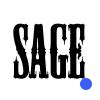
GH5 to Alexa Conversion
JeremyDulac reacted to Sage for a topic
Thanks Jeremy! On their own, as a conversion to VLog, they are really accurate. Looking at the point cloud throughout the color space, they're near perfect. But it is my impression that Vlog is superior for locking in skintone nuances and absolute smoothness. This is essentially because combining two really intricate conversions magnifies translation error. This doesn't apply to the simpler PREs (i.e. Premiere 10bit VLog and ProRes), because of their uniformity.1 point -
Does HLG Increase DR When Rendered as Rec 709???
Mark Romero 2 reacted to Luke Mason for a topic
Essentially, HLG gamma is just BT.709 with aggressive highlight roll-off. It's not advisable to do any intensive grading due to this highly non-linear distribution of bits. If you have used BT.2020 gamut (often combined with HLG gamma as a default). Just map the gamut to BT.709 with some minor adjustment. The dynamic range will remain unchanged after export. After all, HLG is designed to work on both SD TV and HDR TV.1 point -

GH5 to Alexa Conversion
Sage reacted to JeremyDulac for a topic
Great stuff, Alex! As i am working my way through testing I am wondering - Are the 'PRE' files good enough now that using HLG is just as good as VLog straight out of camera?1 point -

Does HLG Increase DR When Rendered as Rec 709???
Mark Romero 2 reacted to Don Kotlos for a topic
rec709/rec2020 are colorspaces so the dynamic range wouldn't change. Even though you can record in rec709 in the camera, I am not sure how wide the support for HLG with rec709 is. The standard is rec2020 so probably stick with that one. The benefit of HLG over SLOG for HDR delivery is that you don't have to spend time grading it. You can uploaded from your SD card and it should work. For non HDR delivery I haven't seen any real advantage of HLG with Sony cameras. if anything having to use rec2020 makes color harder to work with. So in the latter case I would stick with Cine/slog gammas with non-rec2020 color spaces. Youtube has support for it so you could potentially just upload your videos with minimal to no grading, but if you really need it then you should definitely find a monitor to see how your footage actually looks . That will give you the ability to do more extensive color grading as well.1 point -
@kidzrevil well said! I also think the desire to shoot with wide angle and ultra wide angle lenses hindered the lasting power of earlier cameras in the DSLR Revolution. I knew within minutes of shooting my first DSLR (t2i) that wide angle shots didn’t render detail very well, but with shallow depth of field, the image looked beautiful. I’ve been watching some a7ii videos lately and for close ups with shallow depth, it has a brilliant image... but anything wide angle with any pattern, the image turns fast. Point is, we’re not shooting with Alexas or Reds, so instead of complaining about the limitations of these older cameras, for a very cheap price, many could just work around those limitations and get beautiful imagery for next to nothing.1 point
-
Camera to shoot stock video?
DevonChris reacted to Mark Romero 2 for a topic
In the US, we have verifly, which is $10 for one hour of liability coverage up to a million US. In theory, this will cover those who fly as a "hobby" or those who fly professionally. Maybe there is some sort of similar service in the UK???1 point -
The Olympus is 1350euros here, most definitely it will cost more than 1499USD! The OIS is pretty good already. m43 used to be everything about size and weight, but their latest flagships forgot about it, and they went full on. GH5 is bigger and heavier than even full frame dSLRs, there is no reason to hold zoom lenses on the old miniaturization mantra, when you have such a big and heavy body. My opinion about size/weight body vs size/weight lens ratio is that they have to be analogous. What I mean, if you have a full frame zoom like the 70-200, which is a very common lens on many people's arsenals, the ergonomics of the camera have to be capable for such lenses, that is why I was founding the A7 cameras very bad ergonomically. Same with m43, their 35-100 zoom lenses were small and light, and that was a great advantage of the system against large and heavy dSLR cameras. Personally, my sweet spot is APS-C, and specifically, the aforementioned NX with the unique S lens.1 point
-
As someone with a pretty average life (job, family, house, car, etc) who shoots with my GoPro a lot I actually disagree about them being good for family events. They're wide angle, which means that you have to either zoom in, which is pretty difficult to hold them remotely still (unless you rig them up, in which case just use a larger camera with IS) or film everything close up, which is kind of strange and the lens distortions are EXTREMELY UNFLATTERING to average people (who don't have the figures of models or people used to seeing themselves on TV). I actually agree with @Kisaha that the best cameras for recording normal life is the smartphone, as it has many of the advantages but also lots less disadvantages. Also, I think that action cameras are cameras that require huge amounts of editing to get good end results from. You film things close up, film things that are moving quickly (either in slow-mo or real-time), put them over fast music and do a fast edit with lots of cuts. That's the GoPro aesthetic. I think this video proves that: In researching a replacement for my GoPro I was reading forums about potential other cameras, and one person said their camera recorded nice quality at first but later on in the file the quality reduced. One of the replies was to only shoot short clips because "long clips are really boring" - obviously that person assumed the clips wouldn't be edited at all! Last month I shot a film at a club for a friends birthday (I posted it in the GoPro replacement thread) and I shot it with my GoPro precisely because I didn't want to pass my phone to drunken adults in a club. Plus I wouldn't have gotten my DJI Osmo Mobile 2 past security - they took a few long looks at my Bobber handle that I had on it. Completely agree. I did actually go swimming with my iPhone 8 deliberately at the beach when I first got it as I was wondering if I could replace my GoPro with it. I haven't edited the footage yet, but I can tell you the 1080p240 at 400% quality from MoviePro app looks absolutely spectacular in full-afternoon-sun, the screen only worked sometimes, and it took a few hours to dry out afterwards before it would charge properly again. I actually did what you're not meant to do and I plugged it in to charge, so it should have killed something but I was lucky. With your phone you don't have anything else to carry, you get a nice large screen (huge by camera standards), you can edit in-camera, and you can upload direct from the device. Action cameras require SD card adapters a full computer or hours of file transfer time, and all the stuffing around that keeps an army of post-production staff employed around the world. I have a big camera with zoom lens which is good for everything except being discrete (or wider than 24mm), my phone which is very discreet but no zoom, and my GoPro which is waterproof and very wide. In this sense it's a specialist camera used for very particular things.1 point
-
Lenses
mercer reacted to Aussie Ash for a topic
Try this 139 year old lens up against your modern junk.1 point -
nikon mirrorless only a year away!
Kisaha reacted to Aussie Ash for a topic
Nikon need to get "new products"(whatever they may be)available before XMas to boost the current financial year. They have only released one body in the last twelve months the D850 is just too expensive for a lot of photographers. Based on figures from two or three years ago aprox 80% of their camera sales were APS-C,something that Canon doesn't over look with a full range of APS-C bodies down to the very cheap !.1 point -
Blackmagic Pocket Cinema Camera 4K
Aussie Ash reacted to Savannah Miller for a topic
If it's a customized variant of gh5s and terra 4K sensor then rolling shutter should be very fast. GH5s is around 10.5ms and the Terra 4K is 8ms. That's a top-of-the-line performance for any camera of that size, and honestly better than most bigger cinema cams too. Newer RED 8K cams are quite slow sensor readout times and so are the really large Mostro/Vistavision sensors as well. There's actually very few cameras that match that performance. 4K VFX is actually very slow. The way our pipline typically works is we ingest reels of shots directly from the show and then generate the plates ourselves from original camera files and edl/xml data. Shows not shot on Alexa maybe things are different, but this is the general workflow. 4K dpx frames are around 50mb each, so with 20 people all accessing a server requesting these large files, it's noticeably slower. We have insanely fast workstations, but that doesn't make a difference when you're server can't keep up. Only 4K shows that I do are netflix/hulu and occasionally there's a lower budget show that shoots on RED and they tend to do 4K post. But I think they master at 1080. Everything generally takes about 2x longer with 4K, but I have tricks that I can still work fast.1 point -
@TwoScoops bmOGcc... haha... love it. Lights Out was one of the reasons I first decided to shoot Raw with the Micro. I love the look of the BMCC.1 point
-

Blackmagic Pocket Cinema Camera 4K
Aussie Ash reacted to John Brawley for a topic
The Resident is “only” shot 1920, but it’s 444ProRes, so 12 bit. Fox only air in 720 remember ! I’d say the majority of TV production in the US is still 1920 ProRes. They’re not interested AT ALL in 4K. JB1 point -
Thanks deezid! The stars of the show are the main conversions, which are really, really accurate (and smooth). Huge leap for Tungsten. Luma for Daylight is placed very differently; it will result in a lot more effective highlight range when exposed for V2. Thanks tihon84; its just good ole' V-Log (and only Daylight Main V2 applied). The scene was very striking, with late day sun pouring into the little yellow room, overlooking the sea.1 point
-

Is the EOS-M *THE* Digital Super-8 Camera?
Matt James Smith ? reacted to Alpicat for a topic
The EOS M doesn't handle blown highlights very well in raw and you do sometimes get a flat pink (or pure white) colour in the blown out areas, and it's easy to get with harsh clipping sometimes with colourful moire appearing at the edges of the blown out areas. MlRAWviewer might make the problem worse - worth trying another program like MLV App to see if its still an issue? The way to get rid of the pink and hopefully bring back some information is clicking 'highlight recovery' in Resolve, but I'm not sure this necessarily works in every single case. If you want to go slightly further with highlight recovery, look at Juan Melara's tutorial on grading cdngs (for Blackmagic cameras but works for magic lantern raw): Great work though it's a shame about the moire. I guess this must be 720p mode because when shooting 1080p mp4's (with or without bitrate hack) I'm pretty certain you wouldn't get so much moire? Today I've tried the SD card overclock hack. It works and will post footage here soon.1 point -
Great work man! Can't wait to try out the Cine D conversion. Was avoiding 60p for many reasons until now (1080p60 10 bit is oversharpened, UHD60p 8 bit in V-Log is almost as messy as GH4 8 Bit V-log was...)1 point
-
@tihon84 Using a gray card is ideal. You'll want the gray card to reflect the key light Lenses with non-neutral grayscales will essentially 'shift' balance slightly throughout the grayscale. This is to be expected; its part of the 'character' of the lens A gray card will avoid complications of a white paper (tint/transparency). When it comes to minor adjustments of white balance, using the post WB tools (eyedropper/tint/temp) works very well (Its ideal to make sure that white balance is generally correct on set)1 point
-

GoPro stock plummets 90% in less than a 1.5 years
Damphousse reacted to webrunner5 for a topic
My Hero Session 5 is just crazy good for how cheap they are. They are a no brainer for the money.1 point -

Lenses
mercer reacted to Matt Kieley for a topic
Modification of the Fujinon 25mm and 50mm lenses was successful. Here's my unscientific test of all three Fujinon primes (12.5, 25, 50) and a comparison to the Cosmicar and Canon TV-16 lenses. I also did an infinity-close focus test, AND I tested the Tiffen +1 diopter with my Fuji 18-108 (@18mm) which I received today. The minimum focus of the 18-108 is 3.5', but I can get as close as 1' with the diopter, so now I have this focal length available for close-up shots if I want it. I think the Fujis are awesome and I was wrong in my initial assessment when they could only focus close-up. Now having the full range, and a better test, the Fujis are the obvious winners (for my taste anyway). The 50 and 12.5 are a little dreamy at f/1.4 but still nice, better at f/2.1 point -

Guerrilla shooters? (this thread is not about hunting..)
kye reacted to Raafi Rivero for a topic
I pretty much use the terms "guerilla filmmaking" and "run and gun" shooting interchangeably. They're both war metaphors. The shooting style is applicable both for when you have permission, and when you don't, when you have actors, and when you're filming real people. There's also "one man band" which fits in a similar mould. To me run-and-gun is a relative term. A Hollywood person might use it to describe a crew of 10 people, LOL. If there is a difference between the terms it's that "guerilla" implies an ethos - get the film shot by any means. When I shot the piece below, for instance, I never had more than two crew members and was usually alone. All of the rooftop shots were a location that we sneaked onto (and setup a slider and handheld LEDs, ha). The terms guerilla, run-and-gun, and one man band apply to nearly every shot:1 point -

Blackmagic Pocket Cinema Camera 4K
graphicnatured reacted to John Brawley for a topic
I have no idea. As far as I recall, they only did that once with the pocket. And I do love using the pocket / micro to get shots I can't get any other way. JB1 point -
That's my Niece for you. She laughed and got on with it! You can install the picture profile with or without ML installed (ML was installed on mine). Those grades were pretty testing too -- I personally didn't see any noticeable reduction to image quality. Test away, man Nikon F Mount Carl Zeiss 25mm -- B1 point
-

Lenses
Spgreen65 reacted to Matt Kieley for a topic
And here's some quick footage from this afternoon, shot with the Fuji 12.5mm and bmpcc. Seeing how the lens looks with a grainy doc style.1 point -
Don't worry, even expensive professional recorders run on external power. And with a cheap powerbank the Tascam DR60Dmk2 runs all day long! Or even better the Zoom F8n?! Were you using Tentacle Syncs?1 point
-
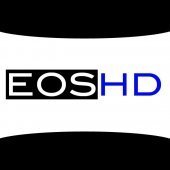
Old Cameras Still Shine Today
kidzrevil reacted to Andrew Reid for a topic
Digital Bolex has an incredible analogue look and fantastic CCD skin tones. 1D C produced amazing thick files, chunky 500Mbit 4:2:2 4K, with Canon's trademark clean low light and great colour in a small body with a massive sensor. I recently saw one go for under £2000 for first time. It's a steal. C100... Meh BMCC 2.5K is a cinematic beast, I am still amazed by the dynamic range in 2.5K raw it produces even today. The huge touch screen was nice too. Rest of the camera not so much Special shout out to the Samsung NX1. Canon colour in a high-end mirrorless camera, with an image that completely floors whatever the C100 can do.1 point -
Old Cameras Still Shine Today
Aussie Ash reacted to mercer for a topic
I couldn’t agree more. 9 out of 10 times, creativity will trump technology. And although I agree you will have more options with a newer camera, I enjoy the creatively cost effective possibilities that older cameras afford. And some of those cameras can be had for peanuts now. The 1DC and C100 are still fairly expensive but are cheap compared to their original MSRP. A GH2 can be bought for less than $200. These are serious cameras that may not hold up against the best cameras available new today (except for the 1DC... that camera is as good as the best 4K DSLR/DSLM on the market) but they are also amazing tools and anyone on a budget could make an amazing film with one. I’m just using the GH5 as an example, you can insert any camera, but for the same money you can get a near mint condition C100 Mark I with DPAF... I think if I was forced to choose... I’d take the C100. Or if I was really strapped for cash and I had to choose between a GH2 or a GX85... or something similar... I’d take the GH2 everyday of the week. So my point being... there are some great cameras on the used market that are 5 years old and there are some great films shot with those cameras... and I thought this could be a fun place to remember those cameras and draw some attention to those films.1 point

